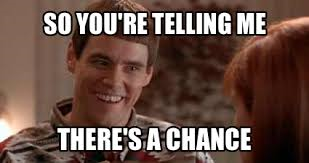TheDudeAbides
Well-known member
Eight points three years ago would put you squarely in front of the huge mass of applicants resulting from the species/application rule change which took place ~2009. A guy entering on the ground floor today is an entirely different ballgame. That is what so many overlook.
I do think the Utah system is reasonable. 50% to those with the most points and 50% bonus point. Separating the non resident and resident tags is also an advantage over up to 10% . There are hunts that someone will not draw on the ground floor Pahvant, Beaver, etc. There are hunts such as Fish Lake, Wasatch, and Manti that someone can or will draw in the next decade. It's all about your plan on attack. There are limited entry deer hunts that you could draw in the next decade. There are general deer hunts that you can draw in 0-3 years with a rifle. There are pronghorn units that can be drawn in the next decade.
As far OIL (Sheep, Bison, Moose, Goat) in the lower 48, they are all bad draw odds and it's all about getting lucky. Up to 6-10% in a combined pool kills your draw odds, because what you are seeing isn't real.
Example of 6 Bighorn tags for a unit in Idaho. Say 100 people apply (R75:NR25) , there will only be one NR tag. Overall it's three in fifty, but your probability is 1 in 100. So, to say it is better is deceitful. Anything below 10% probability to draw is a 90% probability to not draw, which is horrible IMO. Idaho license is 155 ish every year for bad draw odds for non residents. If you don't hunt it, that's all you get. It's close to the same cost of applying in Utah. So, it comes down to personal preference and personal finance.
You know if you look at Randy's system for hunting elk every year and set up your own system just like it or create your own, I'm sure you'll do just fine.






